Challenge Grifo H-TLR 38 Review
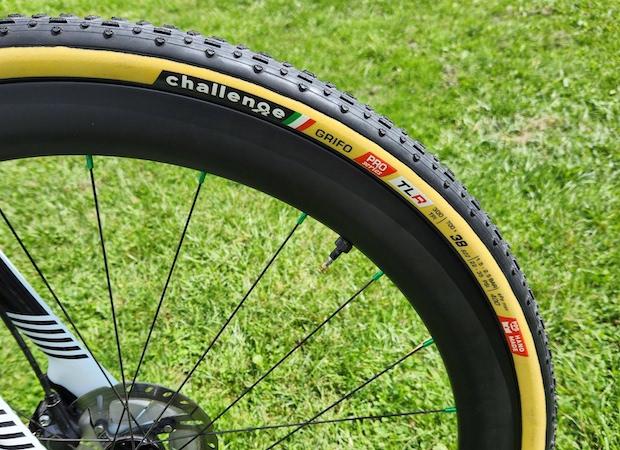
With the cyclocross season underway, we can renew our obsessive conversations about cyclocross tires and optimal pressures. Looking back at the last decade or so, we have come to a degree of consensus.
Tubulars with cotton and polyester casings are supple and offer superior traction at low pressures. Tubulars are also high maintenance and require specific expertise for gluing. Tubulars are fragile. Typically, the casing wears out before the rubber tread, especially if not cared for properly.
Tubeless with typically vulcanized rubber sidewalls are far less supple and are run at pressures high enough to prevent burping. Tubeless tires are far easier to mount and maintain, making them much more low maintenance. Tubeless tires are also durable and will typically last long enough for the tread to wear out.
Almost with the same progression from cantilever to disc brakes a decade ago, I have been witnessing my cyclocross friends transition to tubeless. In almost every case, the sacrifice of tire performance for low maintenance was worth it. Most of them are not missing the maintenance and gluing rituals that are required of handmade cyclocross tubulars.
Changing the Tubeless Game
Challenge has made this decision between cyclocross tubular and tubeless less of a trade-off the past couple seasons. They made the move from vulcanized rubber casings on their tubeless ready tires (TLR) toward using the same cotton and polyester material that they use on their tubulars. The result is a tubeless tire that feels very, very close to a tubular. So much so, that I’m now admitting to my tubeless cyclocross friends that they made a smart transition.
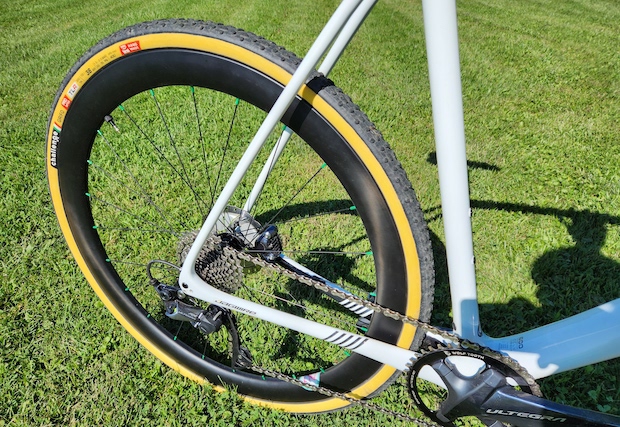
Below is the Challenge tubeless nomenclature, but they are more easily identified by the color of their sidewalls. The H-TLR tires are compatible with hooked and hookless rims and are readily available in 33mm and harder to find in 38mm. The TLR tires are only compatible with hooked rims and come in 33mm.
H-TLR TE Series: Handmade Tubeless Ready Team Edition Series, Sealed Corespun Cotton casings at 320 TPI, featuring RED sidewalls
H-TLR Pro Series: Handmade Tubeless Ready Pro Series, Superpoly casings at 300 TPI, featuring traditional TAN sidewalls
TLR: Vulcanized Tubeless Ready, Nylon casings at 120 TPI, featuring BLACK sidewalls
However, with the move to handmade casings, the H-TLR tires will require more care and maintenance than your typical vulcanized tubeless tire does. Challenge’s warranty statement warns against using a pressure washer on the H-TLR sidewalls and acknowledges that some solvents may weaken the handmade casings.
The Move to 38mm
The rules around maximum tire width have shifted over the years. Where we stand today is a 33mm maximum for UCI elite and USAC Championships for Elite, Junior (17-18), and U23s. Masters may use a maximum of 38mm (except for the Masters World Championships), and Juniors (15-16) can use any tire width. Also, no USAC official is checking tires at your local cyclocross race, so you can run a mountain bike if you prefer.
The relaxing of the rules from 35 to 38mm and an aging population of cyclocross racers who are graduating to the master’s fields set the stage for Challenge to introduce the H-TLRs in 38mm.
What this means is we now have a tubeless tire that feels and handles very close to a tubular in 38mm. I am not at all surprised the H-TLRs in 38mm are currently out of stock on the Challenge website. And, I count myself lucky to have a pair of H-TLR Pro Series Grifo sent to me for review in 38mm.
Mounting
The H-TLRs fit very tightly. In prep for writing this review, I read the instructions on the Challenge website and heeded the warning not to force them too much as to stretch or damage the handmade polyester casing. Challenge sells a seating tool, but it was not provided with the tires. Instead, I used a wide Pedro’s plastic tire lever. I worked my way around the tire, seating and unseating the bead until I had the tire on the rim evenly and could carefully move the last part of the tire over the rim. I may have been over cautious, but I’m familiar enough with Challenge casings to know that you can easily damage them if you are careless.
I mounted the tires on a set of carbon, hooked rims that have a 21mm internal width. I removed the valve core and used my air compressor to seat the tires. They snapped in place fairly quickly. The tire was on so tight that I may have been able to use a hand pump, but I opted for the air compressor. The shape of the 38mm tire on the 21mm internal width rim appeared pretty consistent with the shape of my tubulars, but I definitely could see how you could use a wider rim while still keeping the tire width measuring at 38mm.
I opted to use Challenge’s sealant because I wasn’t sure how the casings would interact with the other sealants that I had on hand. I used 80 ml of sealant in both tires, inserted through the valve. This sealed them up enough that they were holding pressure over night.
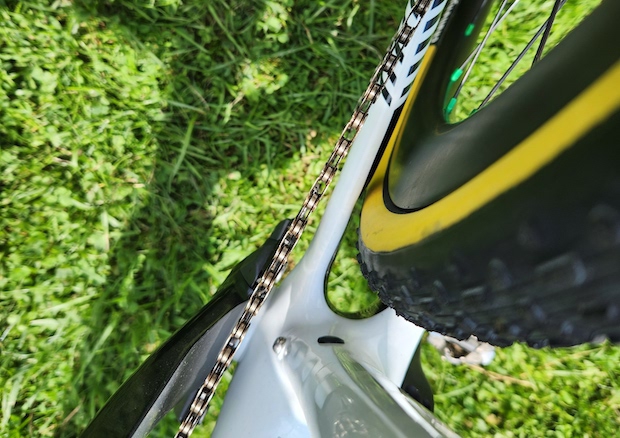
If you have an older cyclocross frame, the clearance may be tight with the 38s. That is a 2019 Trek Boone in the pictures, and while the clearance is ok with 38s for dry conditions it may be too close for when it gets really muddy. New model year cyclocross bikes are coming with more clearance. It’s worth checking that out before making the jump to 38mm.
Dialing in the Pressure
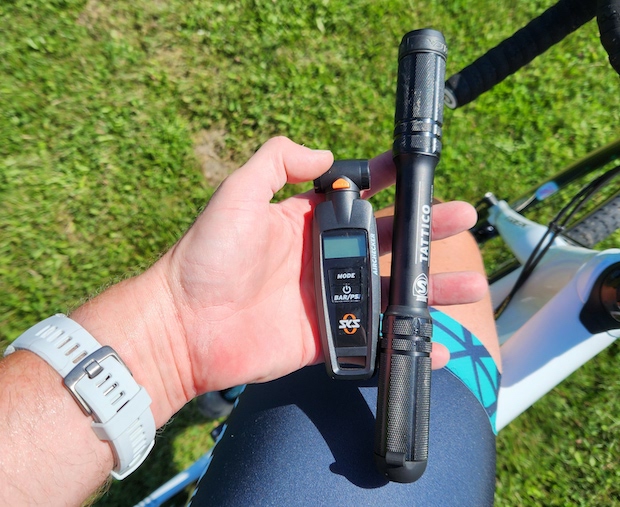
As this was my first time riding a 38mm cyclocross tire and my first time on a tubeless tire with a supple casing, I started from scratch in trying to find the optimal pressure. My process involves heading over to a familiar cyclocross course where I do most of my training, bringing along a hand pump and a digital pressure gauge. I started at 30 psi taking some hot laps on the course that is now a mix of grass and dry dirt, as well as some really tight circles in the grass. I let out 1 psi at a time until I found that point where the tire was folding on me a bit and bottoming out on roots.
Let’s acknowledge though that we are not all equal in terms of our cyclocross handling. I consider myself an average bike handler, separating my body from my bike in turns and weighting the tire appropriately. A more talented bike handler of the same body weight likely can get more out of this tire than I can at the pressure I was running, but I’m also not wholly terrible either and typically can push a tire in a turn pretty far without folding it.
I settled around 25 psi. I was folding the rear a bit at 24 when really ripping a turn, and I wasn’t entirely comfortable with bottoming out on the occasional root as I would be with a vulcanized side wall. I’ve been running them around 25 in the front and 25.5 in the rear.
Performance
So far, I have ridden around 60 miles on these tires, almost exclusively on grass and dirt. In short, I am amazed that these are tubeless tires. I know part of what I am experiencing is the larger volume of the tire. But, the tire also feels more like a tubular when really ripping a corner because the sidewalls are supple. It’s a hard feeling to explain, but you know when it is there (typically with a tubular tire) and you definitely know when it is not there (typically with a vulcanized tubeless tire).
The result is a tire that affords more margin of error in turns. Exit speed is everything in cyclocross, the more speed you carry out of turns, the less power you need to stay on terms with your competitors. For most of the many turns on my practice cyclocross course, there is one line (the hot route) that yields the fastest exit speeds. However, what I found with the larger 38mm tires is that I didn’t have to hit the line perfectly like I would with a 33mm tubular. The 38 was more planted with a larger contact area, and I could take a sharper line that would typically mean slipping out at the same speed.
It's hard to do any kind of reliable empirical testing on a cyclocross course that has constantly changing conditions throughout the year, but according to Strava I ripped a KOM on my home course without really going for it while riding these tires.
I also raced on these H-TLR 38 Grifos this past weekend near Rochester, NY. The course was very twisty with a good amount of single track. A lot went wrong that day, including snapping my seat mast, but one of the few things that went right was the tires. The Grifo is a great all-around tread pattern for early season races, and the larger volume 38 was hooking up nicely in all of the corners even when the corners started to break down and get slick throughout the day.
I did have some small sealant burps in the rear at 25.5 psi, but I didn’t seem to lose any air pressure when I checked after the race. I will add some more sealant to the rear to be safe and see if I can get a better seal.
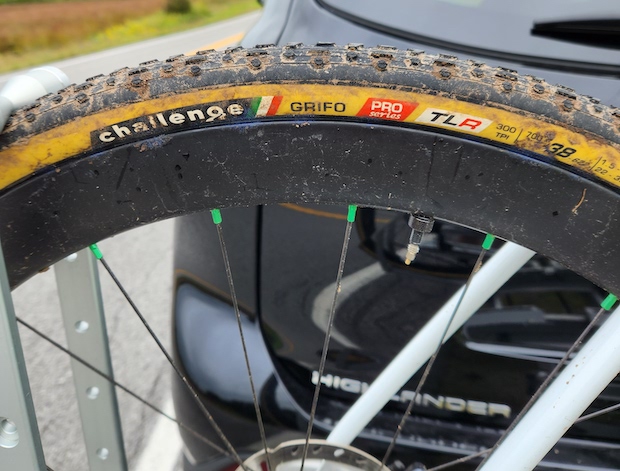
I’m Hooked
While I’m not ready to completely give up my tubulars and all the work that goes along with them, I don’t think I will be investing in any new tubular cyclocross wheels going forward. If tubeless can now feel this close to tubulars, I am definitely headed in the direction of phasing out tubulars over time. No rush, though. I have plenty of Mastik on hand.
Since my last UCI Elite race was in 2006 and my cyclocross age is now 50, I don’t see any reason to adhere to 33mm tire norm/rule with Challenge making both tubulars and tubeless in 38mm with supple sidewalls. I’ll be keeping my eye out for when Challenge has the 38s back in stock.
Also, I don't think I'm realizing the full potential of these H-TLR Grifo 38s on a 21mm internal width rim. I have a tubeless wheelset on my gravel bike that has an internal rim width of 22mm. My hunch is that these tires will ride even better on those wheels, so I will be moving those wider rims into my quiver of cyclocross wheels very soon.
I am curious about a direct comparison between Challenge’s 38mm tubulars and tubeless. So, I hope to report back at some point comparing the equal tire volume between the two. That will likely be the decisive comparison of whether or not I keep running tubulars going forward.


Start the discussion at slowtwitch.northend.network